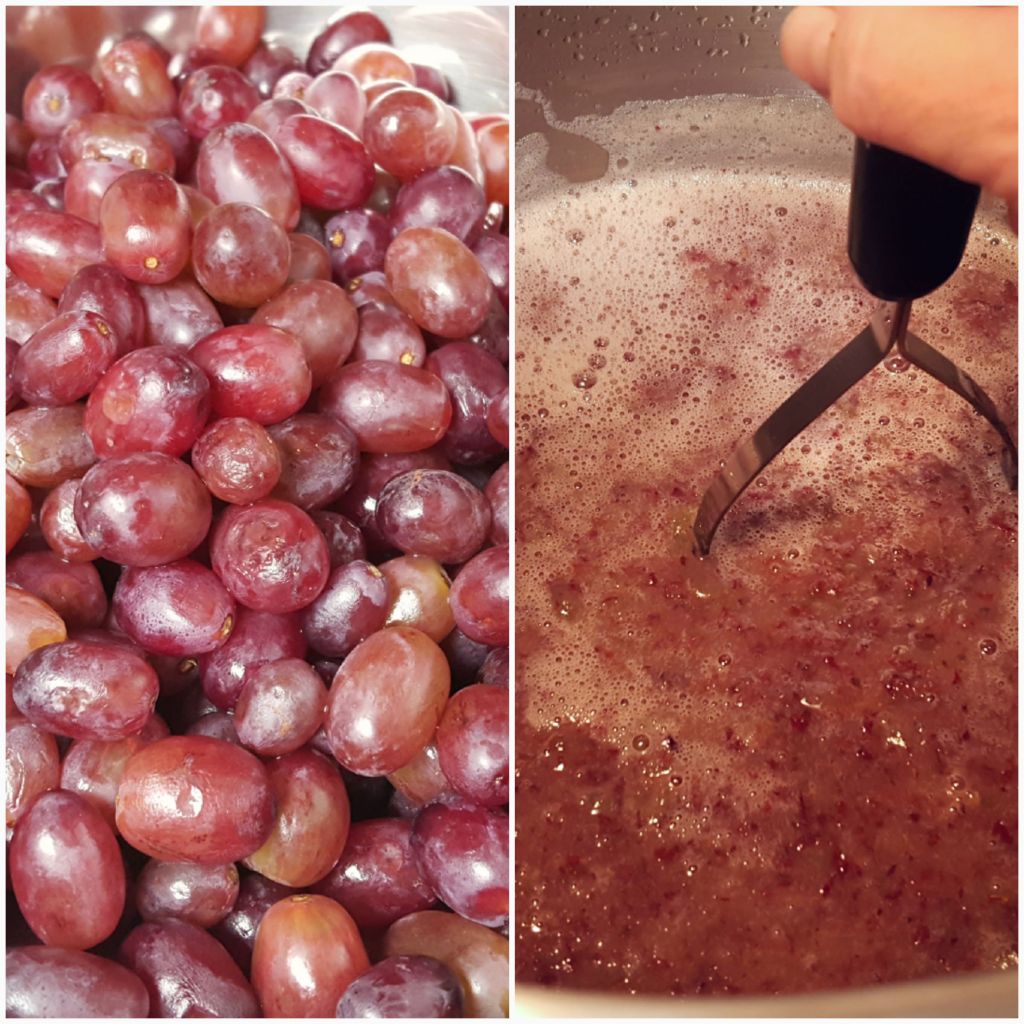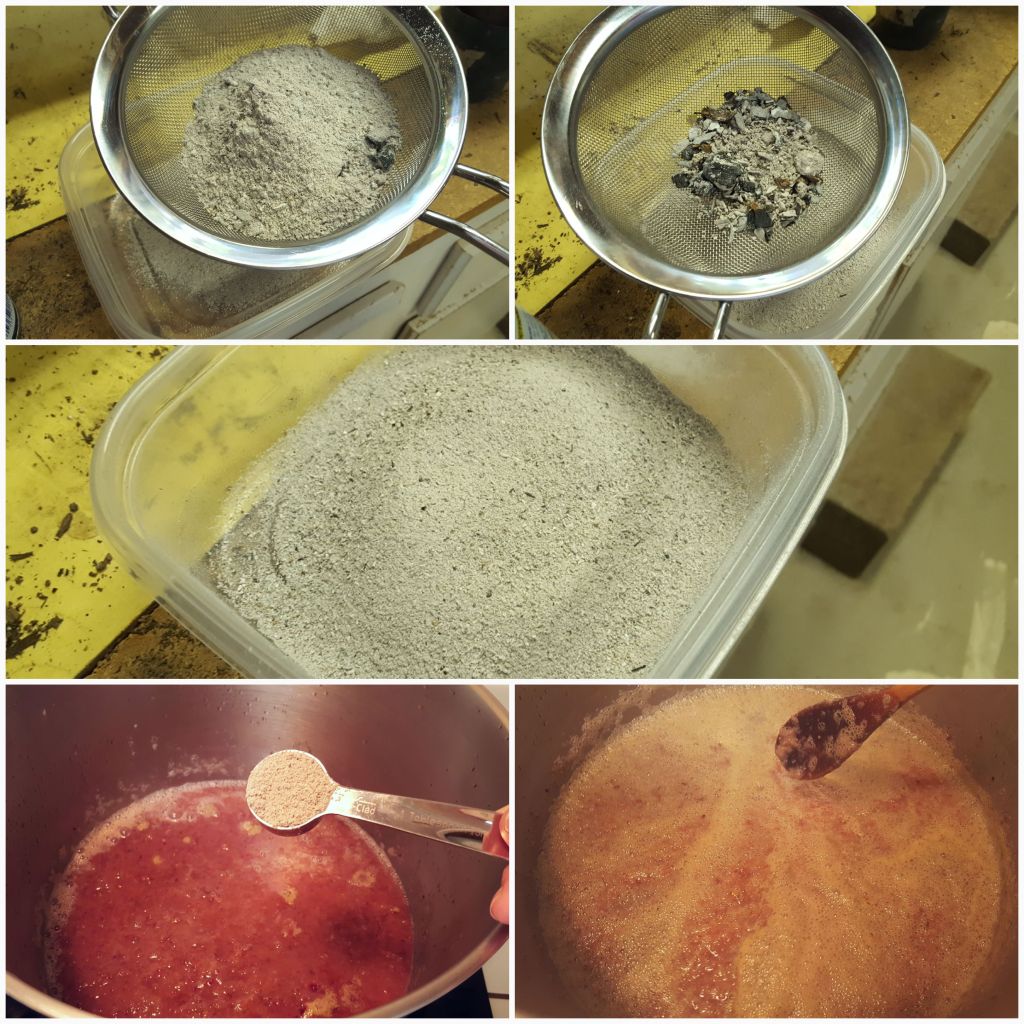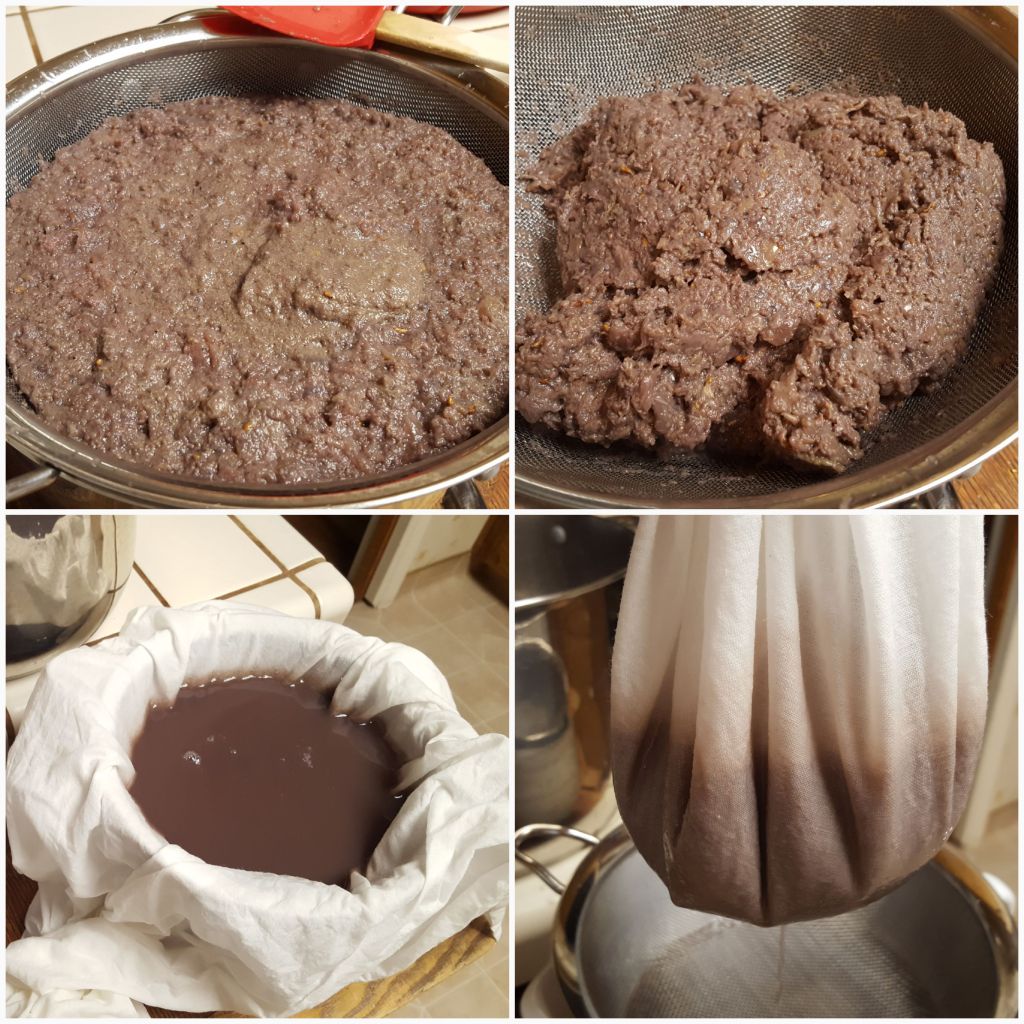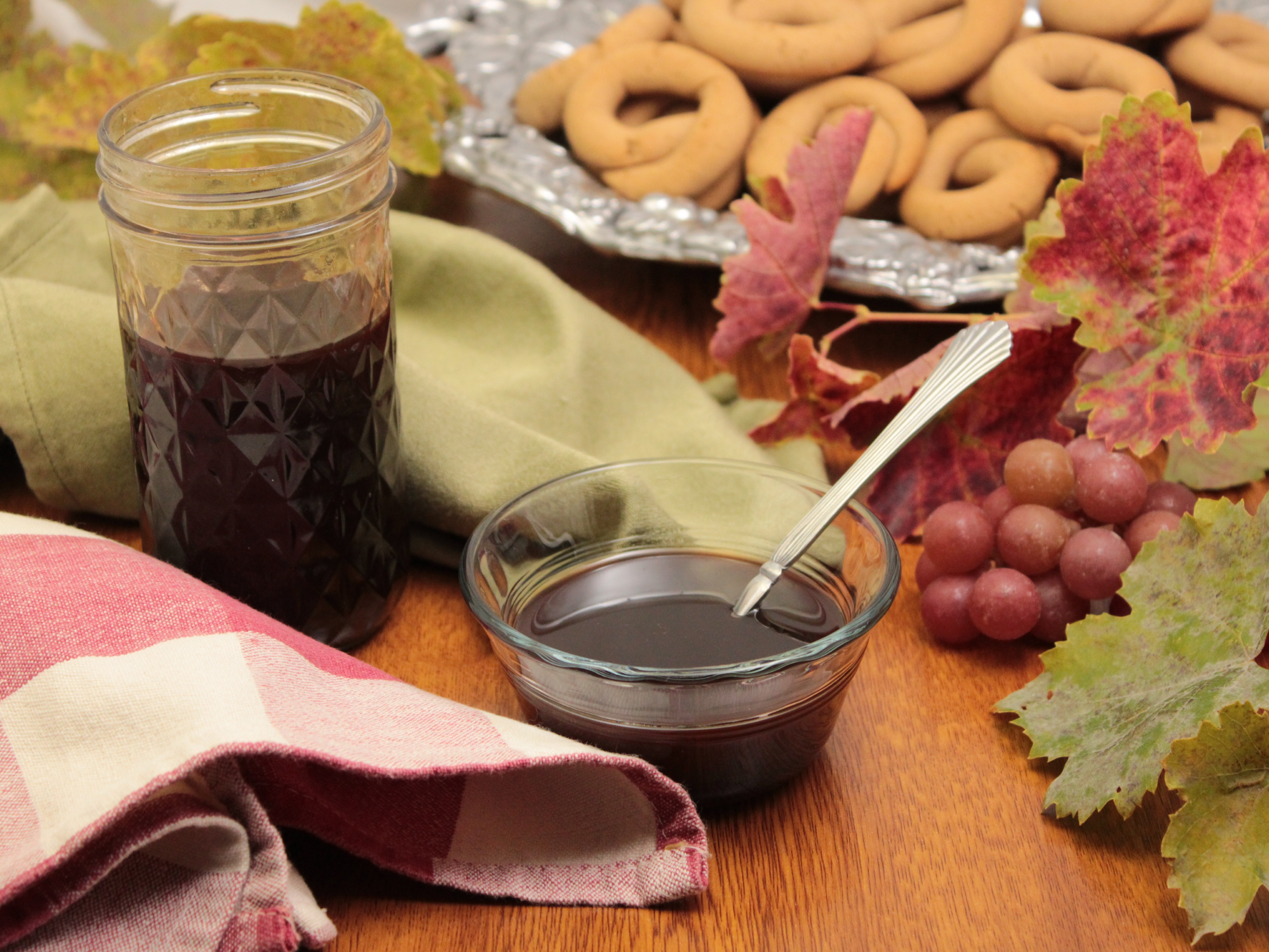
I have finally accepted the fact that I will never be able to grow sugar maple trees to make my own maple syrup because of the climate here. But I live in grape growing country. So there.
(All links open a new page, so you won’t lose your spot when you look around! Get information on gardening and cultural traditions, recipes, stories, and more!)

Where I live is too hot and too far south for the kind of maple trees that are best for making syrup from. However, it happens to be the perfect zone for growing grapes. A short drive from home is all that’s needed to find vineyards full of row after row of grapes being grown. Wine grapes, grapes for fresh eating, and raisin grapes all can be found here. Heck, I just need to walk out to my backyard.
Greeks having been growing grapes for thousands of years. That same Mediterranean climate that I enjoy here in California is great for producing grapes for the exact same reason. Greece’s wine production goes back to the ancients, as does a nifty process that makes use of the leftover juice (also known as “must”) after squeezing the grapes.

At some point someone figured out that by cooking down the leftover must, a sweet syrup could be made that wouldn’t spoil. This syrup, called petimezi (peh-tee-MEH-zee) could be used the same as honey. In fact both were the main sweeteners available until refined sugar was developed. Even now, petimezi is still used and is now widely sold across Greece. Due to the nutrients in grapes, petimezi is a healthier option than plain sugar, too! (Update: here’s my recipe for moustokouloura, a cookie made with petimezi!)
Some quick notes before you begin:
There is a key ingredient you MUST use (pun absolutely intended) if you want a good quality petimezi, and that’s wood ashes. YES! When ash and water mix, a type of lye is made (just like in old fashioned soap making). Lye is alkaline, which neutralizes the acidity of the grape juice. Despite what many of the myths perpetuated on the internet claim, the ash does not clarify the juice nor does it halt fermentation. Straining and cooking take care of those issues. If you don’t use ash, you will concentrate the acidity and your petimezi may be rather sour.

About that ash, do not use leftover ashes from barbeque charcoal, or any type of treated wood, or wood that had any type of lighter fluid. Only ashes from plain wood should be used. You don’t need much, but do be sure to sift out large chunks of coals.
You will need to strain out the juice. I give instructions for a two-step process to strain solids first, then fine sediments. Don’t try to shortcut and strain out both at once unless you have an immense amount of patience. The large chunks slow down the filtering of liquid through the cloth so getting them out first speeds things up immensely.

The best petimezi will be made from fresh grapes, however commercial grape juice can be used. Choose a variety that is pure juice, not from concentrate, and has no additives since those could affect the end product.
You will need a lot of grapes and/or juice to get a decent amount of petimezi. I started with 8 pounds of grapes and ended up with 2 cups of syrup. However, the syrup is very concentrated and so it goes a long way.
Petimezi (Greek Grape Molasses) Recipe

Directions
Start with at least 8 to 10 pounds of fresh grapes of any variety. Remove the stems and wash the grapes.
You will need to extract the juice from the grapes. No, you don’t have to stomp on them with your feet! Use a blender, food processor, juicer, etc. to do the job. You’ll want the grapes pureed to get out the most juice. If those gadgets aren’t available, mash the grapes as much as you can in a pot with a potato masher.
For every quart of mashed grapes, you’ll need 1 Tbsp. sifted wood ash. You’ll do the same if you are using commercial grape juice. Add the mashed grapes/juice and ash to a pot and stir to combine. You should see some fizzing as the lye neutralizes the natural acids in the grapes.
Heat the mixture to boiling and allow to boil for just a few minutes. Remove from the heat and cover. Allow the mixture to cool. This part of the process helps to extract more of the juice from the fruit and to properly neutralize the acidity.
Once the mixture is cool enough to be comfortably handled, pour it through a fine mesh strainer to remove the solids. Stirring the mixture around in the strainer will help speed up the process. You get to skip this step if you are using commercial juice, and move on to the next.
To filter out the fine sediment and ash, you will now need to strain the liquid through a tight weave cloth. A muslin tea towel is my preferred material and can be washed for reuse. Cheese cloth is too open weaved to be useful. Lightly dampen the cloth and set it in a strainer. Pour the liquid through the cloth. The liquid will pass through faster if you gather up the corners and suspend it. If the liquid stops moving through that section of the cloth, move the liquid to a fresh section and continue. Don’t squeeze the cloth or you will push the sediments back into the juice! Don’t worry if the juice isn’t perfectly clear, by the time it is cooked down it will be too dark to be seen.
(Update: I now leave the juice to settle further after straining through the cloth to remove any grittiness, usually 24 hours is ample time. Keep it in the fridge if you won’t be able to get to it sooner than this. It works best if the juice has been put into a tall container like a pitcher. I will then pour the clarified liquid from the top through coffee filters to remove as much sediment as possible. Be careful not to disturb the sediments at the bottom, those can go into the compost or garden.)
Put the strained juice into a wide pot. Bring the juice to a boil and cook down, stirring occasionally. The liquid may foam up so you may need to reduce the heat to prevent this from happening. As the liquid begins to thicken, you will want to lower the temperature more to prevent it from burning. Continue to cook it down until the consistency is like maple syrup. It will thicken more as it cools.
As soon as the syrup has cooked down to the proper thickness, put it into clean jars and seal. Once it is cool, it should be similar to honey or molasses in thickness. If it seems too thin, you should cook it down a little more to make sure it won’t spoil. It should be shelf stable due to the lack of moisture, but you can also store it in the refridgerator. Use it just the same as you would any syrup or honey. Enjoy!


Interesting. On Oxi Day a few years ago I was invited to the celebration with a neighbour’s family on Crete and the lady of the house was mixing must with ashes, which I knew nothing of. Her husband promised to bring me the result to sample and a few days later came round not with molasses but with a beige jelly-like paste that had a mild sweetness. I wonder how it differs from your recipe (I do not have enough Greek to discuss it with her).
LikeLiked by 1 person
How neat that you were able to spend that day there! Chances are good that what she did was cook it down even further, although I’m puzzled by the beige color. I wonder if it is just the type of grapes she used. If they were green rather than the black or red grapes, I would expect that this might explain it. I’ve not seen petimezi turned to a paste, but there are always regional differences. Thanks for sharing this with me!
LikeLike